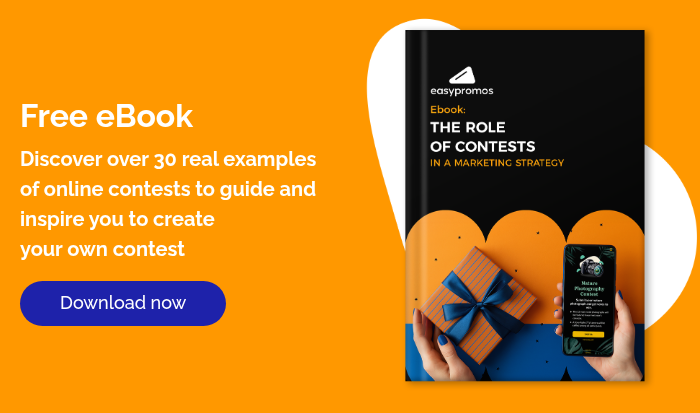Correctly defining the objective behind a promotional action enables you to then quantify the objective, and thus prepare the necessary actions for carrying out the promotion. In this post we go through the main objectives that brands – large or small – cite when carrying out online contests, sweepstakes or promotion across social networks such as Facebook, Twitter and Instagram.
The 6 main objectives of brands who organize contests on the social networks are:
Brand awareness
All contests on the social networks share the aim of increasing brand visibility, either as a primary or secondary objective. This might be to ensure that new users learn about the brand; or it might be to remind users that the brand still exists; or it could also be to strengthen the brand’s relationship with those who are already customers. A small reminder of the brand could be a decisive factor for a person who is currently contemplating making a purchase.
Attracting new users
Promotions and contests are an ideal means of obtaining user data, such as name, surname, email address and other useful information, along with receiving the express and explicit consent of users to send them commercial information. Brands offer users the chance to win attractive prizes in exchange for them registering for the sweepstakes. It is an exchange accepted by both parties: the user provides his/her information, while the brands give him/her the chance to win a prize. This exchange should be properly described in the terms and conditions. Brands can use data obtained via these contests for commercial ends.
Loyalty
Actions such as carrying out a Twitter Giveaway or giving away a discount coupon to fans of a Facebook Page have the objective of rewarding the loyalty of users who already know, consume or show an interest in the brand. These actions help to reinforce the relationship between the brand and the user, and they increase brand value. Recommendations and tips exchanged among users represent one of the most important factors behind a user purchasing a product. And those most loyal to a brand will be those most likely to recommend it to others.
Increase followers on the social media
Facebook was the first social network to offer the chance for brands to open a profile and use it to establish relationships with users. This relationship between user and brand was initially referred to as being a ‘fan’, and later involved users ‘liking’ a page. Twitter and Instagram profiles have ‘followers’, while in blogs these are usually known as ‘subscribers.’ The existence of more possibilities for relationships between users and brands has two implications: the first is that the brand can publish something and know that their followers will see it. The second implication is that these social network profiles are a public measurement of a brand’s value. It is easy to determine brand awareness by counting the number of public followers of the various social networks. Therefore, users can quickly and easily compare brands based on their level of public recognition. Contests and promotions help to increase the number of followers of a brand.
Promote a product or service
One of the most common actions for brands is to carry out a simple sweepstakes of a new range of products, publicizing it via the social networks. This ensures that awareness of the new product reaches the followers of a brand – and not simply by way of a promotional announcement, but via a sweepstakes in which the product is given away as a prize. This generates more interest among users who are attracted by the chance of winning something. These promotions are usually combined with our quizzes app about the features of the product, so the promotion serves not merely to launch the product but also to highlight its main benefits.
Get to know the opinion of users
As well as being a method of capturing data of new users, these contests also enable brands to obtain opinions which are invaluable to companies in their decision making. For example, a common contest is: “Pick your favorite photo and you will be entered into a sweepstakes for the chance to win this product.” The user will then be shown four photos, and by selecting one of them he/she will be entered into the sweepstakes. It is also possible to give the user more opportunities to enter the sweepstakes if he/she persuades friends to choose their favorite photo too. This simple action has rapid dissemination and viralization across the social networks, permitting brands to obtain many valuable opinions about their products at a reduced cost.
These are the 6 main objectives of businesses when carrying out promotional actions across the social networks. The next step is to quantify the objective: How many users do I want to capture? How many brand mentions do I want to receive? How many new followers would I like to obtain? And so on. The objective and its quantification will then help define the creative concept behind the action, the promotion mechanic, the application type, the prize, and the amount of investment put into publicizing the promotional action.
